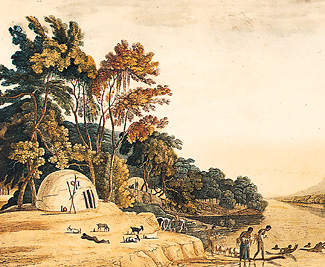Khoisan, << KOY sahn, >> also spelled Khoesan, is a group of languages spoken in southern and eastern Africa. Khoisan languages are spoken by several ethnic groups who live in Namibia, Botswana, and South Africa. Two ethnic groups in Tanzania—the Hadza and the Sandawe—also speak a Khoisan language. The languages are distinct from the Bantu and Cushitic languages spoken by most peoples of southern and eastern Africa.

Khoisan languages are known for the large number of sounds used. Some Khoisan languages have as many as 126 consonants and 28 vowels. The languages are notable for using several distinct click sounds as consonants. Clicks occur only at the beginning of words in most Khoisan languages. Clicks also occur in the middle of words in Hadza and Sandawe. Clicks account for about half of consonants in these languages and 70 to 90 percent of all words begin with clicks. Khoisan languages use different tones to communicate meaning. A tone is the pitch used in saying a particular word. Khoisan languages also include many guttural (throaty) sounds. The number of sounds in Khoisan languages far exceeds the number found in neighboring Bantu and Cushitic languages.
Scholars originally grouped all Khoisan languages into a single language family. Today, language scholars recognize three to six distinct divisions within the Khoisan languages. Scholars believe that Khoisan-speaking peoples lived throughout southern and eastern Africa long before Bantu-speaking and Cushitic-speaking peoples migrated into the region. Many Khoisan languages have since become extinct. However, a number of Bantu and Cushitic languages have adopted Khoisan clicks into their vocabularies.
